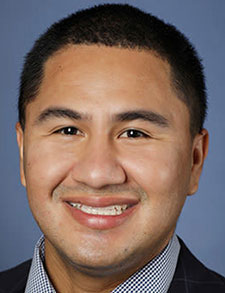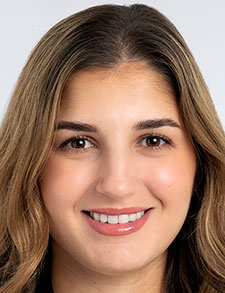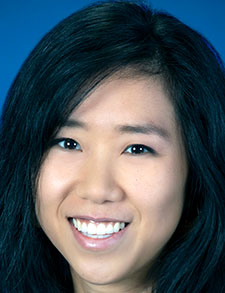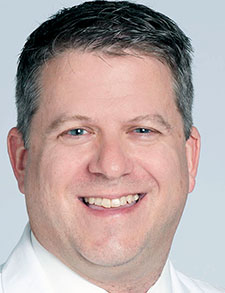 Modern hospital medicine practice is diverse and characterizable through its willingness to innovate and be inclusive of new ideas and perspectives. While hospitalists aspire to evidence-based practice, there are some topics and areas of our work that just do not fit into neat and tidy categories.
Modern hospital medicine practice is diverse and characterizable through its willingness to innovate and be inclusive of new ideas and perspectives. While hospitalists aspire to evidence-based practice, there are some topics and areas of our work that just do not fit into neat and tidy categories.
To address some of these issues in a novel way, this new forum will enable hospitalists and trainees to discuss timely and important topics related to the practice of hospital medicine across the continuum of practice. Topics are broad-ranging and relevant to today’s practice of hospital medicine and therefore addressed with a lighthearted but experienced opinion rendered around chosen topics.
Just like there are two sides to every coin, here we present different perspectives on a single topic from different perspectives, hence The Flipside.
Recently the discussion of the benefits of including patients in prerounding were discussed in several forums.1-3 While these explorations of the topic are well-informed, their conclusions were by no means based on the type of evidence that guides clinical practice, but rather on a series of philosophical conjectures based on expert opinion and extrapolations from existing literature. While we agree that unstable patients should all be seen before rounds, the question remains about the utility of seeing all patients before formal rounds. In this inaugural installment of The Flipside, we incorporate the perspectives of trainees and hospitalists to further advance the dialogue on the topic of prerounding.
Prerounding is preferred
The siren alarm goes off, but I inadvertently hit snooze and sleep through the alarm. With no time for a coffee before leaving the house, I am now running late for my first day as a PGY-1 resident and unable to preround on all my patients. Upon arrival at the hospital, the chaos continues. The pager constantly buzzes with patients’ family members calling the nursing station to ask for updates, a rapid response is called on one patient, and the case managers request to touch base about two morning discharges. I briefly review most charts, but due to the rush, I don’t have a chance to visit every patient. Because of time constraints, I’m not able to visit the patient who was going to be discharged early, missing the fact that the discharge was canceled due to financial constraints around transport. When this is discovered on bedside rounds, it’s too late to engage the family in the process of assisting with transport to rehab. There is no time left to complete the proper discharge paperwork and it’s delayed by an entire day.
I feel terrible knowing I didn’t get a chance to preround on the patient.
I meet with the supervising hospitalist staff to debrief about the morning. They help me identify that patients were not being seen and examined or spoken to until “bedside teams” rounds, which led to confusion during rounds. I decide to make it a point to preround on every patient, prepare them for the team’s visit, and provide education about their care plan. At the end of the week, the morning is going swimmingly. Laboratory results are coming back on time and the team is running well. Patients are well-informed, and families are updated promptly. The hospitalist is practically glowing with admiration and pride when the patients are actively “teaching back” what we had reviewed as the plan on prerounds. The patients express gratitude and appreciation for the good communication from the entire team. Having set prerounding as a priority and expectation for the team, the practice becomes more than just a “cursory check-in,” but is rather an important opportunity to establish rapport and advance patient care forward.
Prerounding in moderation
The siren alarm goes off at five in the morning. I throw on a pair of wrinkled unmatched scrubs, make a cup of coffee, and brush my teeth before I race to work for my first day as a senior resident. In the hospital, the PGY-1 residents frantically print pages of information for their patients and use multicolored pens to squeeze information onto papers already flooded with labs and imaging reports. Before I can discuss the plan for the day with the PGY-1 residents, they rush off to see their patients. I decide to visit Mrs. Jones, who presented with lower extremity cellulitis and might be able to go home today. However, she’s finally getting back to sleep after the nurse, phlebotomist, and PGY-1 resident, Alex, woke her, and she wraps herself under the covers as she snaps at me to go away. I race back to rounds and realize I left my coffee at home and no longer have time to run down to the cafeteria. Alex is in the middle of presenting Mrs. Jones. The attending probes Alex on the physical exam, but he didn’t know he should look at the borders for the spread of the cellulitis and isn’t sure what fluctuance feels like. He seems flustered and loses his place amid all the scribbles on his paper. The attending then focuses on the management plan and Alex struggles to answer.
I feel terrible knowing I didn’t get a chance to check in before rounds.
I meet with the supervising hospitalist staff to debrief about the morning. They suggest being intentional as a team about prerounding and considering what is necessary information for formal rounds. At the end of the week, we have another patient with cellulitis on our service, Mr. Lee. Instead of rushing to see our patients before formal rounds begin, I spend some time in the morning showing the PGY-1 residents a more efficient way to review the patient chart. We briefly review the latest Infectious Diseases Society of America guidelines for skin and soft tissue infections and plan what questions and physical exam maneuvers we are going to focus on for each patient. Since we didn’t preround on our stable patients, the hospitalist attending meets us at Mr. Lee’s bedside. Alex does an exceptional job with his presentation and reviews potential antibiotic plans based on the patient’s exam. The attending sees Alex model excellent bedside manner during his physical exam and effectively demonstrate the most salient exam components for patients with cellulitis. He confidently shares the plan for the day with Mr. Lee, building his trust in his care. Having set prerounding as a time to thoughtfully consider the pertinent components of the patient’s history and exam that will impact the plan, the practice becomes more than just a “cursory check-in,” but is rather an important opportunity to think critically about patients and advance their care forward.
Discussion
Prerounding has long been a component of inpatient team rounding, with trainees visiting patients at the bedside before discussing their care with the attending physician during rounds. Historically, attending physicians had outpatient patient-care duties that continued while they were teaching in the hospital, necessitating interns to provide as much information as possible to inform patient care plans on rounds. However, as inpatient care has evolved, the convention and utility of prerounding have been questioned and re-evaluated, just as other aspects of rounding including the purpose of rounds, the format of rounds, and the ideal teaching methods used on rounds have been discussed and described.4-6
In addition to providing optimal patient care, a core component of rounding in an effective clinical-learning environment should include helping the next generation of physicians gain the skills necessary to think critically about medical problems and care independently for patients. Some believe that prerounding helps foster autonomy and build a sense of ownership, a necessary step that helps form the professional identity of trainees. On the inpatient side, a patient’s clinical picture can evolve quickly, and prerounding may allow learners to identify subtle important changes. Additionally, the ability to gather, report, and interpret patient information is a part of a critical framework used in medical education to gauge progress and entrustment decisions.7,8 Direct observations of patient care encounters are essential in the appraisal of trainees, but there are obviously limits to the utility of universal prerounding in the evaluation of trainees in the current model of inpatient care.
Most residents are not taught how to preround, leaving the practice to local culture and tradition. In fact, time studies have shown that in a typical workday, PGY-1 residents only spend about 13% of the time with their patients, indicating an extreme time compression in favor of activities away from the bedside.9 Ideal patient-physician relationships are not built from rushing through a haphazard, sleepy interview at six in the morning. Selectively removing physical prerounding on stable patients can allow residents to spend additional time before formal rounds gathering necessary chart information and intentionally thinking through each patient encounter. When they visit patients, instead of focusing on the quantity of patients they can see before formal rounds begin, they can spend more quality time with them.
Removing physical prerounding works best when paired with bedside formal rounds to allow the team to create a unified plan of care based on the patient’s history and exam. It can also help to set expectations preemptively with stable patients that they may not be seen until later in the morning. During rounds, if a patient is not seen, the learner can explicitly describe the most relevant components of the encounter that will help guide their plan for the day. Residents and students can present the questions they will ask the patient and the exam findings they are looking for with multiple, potential, action plans based on what they discover during the visit. This may allow attendings to better identify a gap in diagnostic reasoning when learners are not able to clearly identify pertinent positives and negatives in the history and exam. In fact, the choices made by team members of whom “to see or not to see” may be used as an additional anchor for understanding the trainee’s progression in key milestone areas such as systems-based practice, medical knowledge, professionalism, and of course, patient care.7
Regardless of what side of the prerounding coin you may land on, all of us agree that prerounding has incredible utility in the care of patients in the clinical learning environment. Additionally, prerounds should be patient-centered and efficient, and enhance trainee learning and thereby the quality of care we provide. While prerounding may not be a one-size-fits-all mandate or practice, understanding when and where to do so speaks further to the benefit of experience and very intentional planning in success during a busy day caring for hospitalized patients.

Dr. Manriquez

Dr. Ahad

Dr. Shi

Dr. Wardrop
Dr. Manriquez is a resident physician at the University of California Davis in Davis, Calif. Dr. Ahad is a resident physician at The Cleveland Clinic in Cleveland. Dr. Shi is an assistant clinical professor and adult hospitalist at the University of California Davis. Dr. Wardrop is a professor and staff hospitalist at The Cleveland Clinic.
References
- Schubach A, Ricotta D, et al. To preround or not to preround. N Engl J Med. 2024;390(19):1824-6.
- Hartley S, Heidemann L, et al. Counterpoint: The value of including patients in prerounding. J Hosp Med. 2023;18(5):460-2.
- Ue F, and Kaminski M. Rebuttal: Routine prerounding with patients. J Hosp Med. 2023;18(5):463-4.
- Hulland O, Farnan J, et al. What’s the purpose of rounds? A qualitative study examining the perceptions of faculty and students. J Hosp Med. 2017;12(11):892-7.
- Ricotta DN, Freed JA, et al. Things we do for no reason™: card flipping rounds. J Hosp Med. 2020;15(8):498-501.
- Kinnear B, DeCoursey B, et al. Things we do for no reason™: toxic quizzing in medical education. J Hosp Med. 2022;17(6):481-4.
- Accreditation Council for Graduate Medical Education. Internal medicine milestones. ACGME website. https://www.acgme.org/globalassets/pdfs/milestones/internalmedicinemilestones.pdf. Published July 1, 2021. Last updated November 2020. Accessed October 25, 2024.
- Rodriguez RG, and Pangaro LN. AM last page. Mapping the ACGME competencies to the RIME framework. Acad Med. 2012;87(12):1781.
- Rosen MA, Bertram AK, et al. Use of a real-time locating system to assess internal medicine resident location and movement in the hospital. JAMA Netw Open. 20221;5(6):e2215885. doi: 10.1001/jamanetworkopen.2022.15885.
As a soon to be nurse I gained alot of knowledge reading this article. In school my professors place a emphasis on the importance of being in the patients room or near the patients room during rounding because of the knowledge that is explained during that time. I really enjoyed reading about the different mindsets of current medical professionals in relation to rounding.
As a recent IM grad and current hospitalist who is occasionally working with residents, I am team preround in moderation for sure. It is more comprehensive for patient planning, intentional rounding, teaching and learning. It is also most similar to my practice as an independent hospitalist.